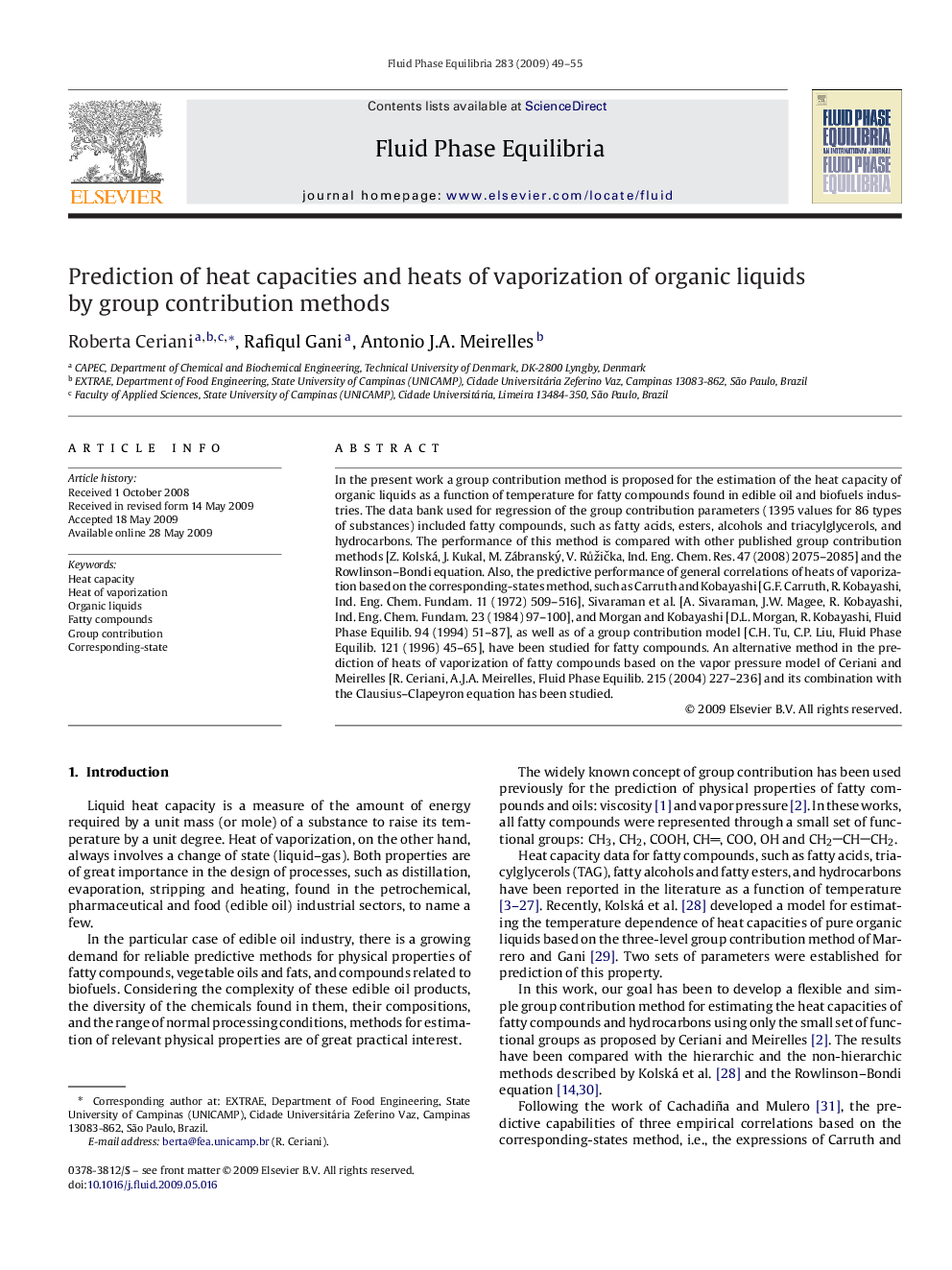| Article ID | Journal | Published Year | Pages | File Type |
|---|---|---|---|---|
| 204611 | Fluid Phase Equilibria | 2009 | 7 Pages |
In the present work a group contribution method is proposed for the estimation of the heat capacity of organic liquids as a function of temperature for fatty compounds found in edible oil and biofuels industries. The data bank used for regression of the group contribution parameters (1395 values for 86 types of substances) included fatty compounds, such as fatty acids, esters, alcohols and triacylglycerols, and hydrocarbons. The performance of this method is compared with other published group contribution methods [Z. Kolská, J. Kukal, M. Zábranský, V. Růžička, Ind. Eng. Chem. Res. 47 (2008) 2075–2085] and the Rowlinson–Bondi equation. Also, the predictive performance of general correlations of heats of vaporization based on the corresponding-states method, such as Carruth and Kobayashi [G.F. Carruth, R. Kobayashi, Ind. Eng. Chem. Fundam. 11 (1972) 509–516], Sivaraman et al. [A. Sivaraman, J.W. Magee, R. Kobayashi, Ind. Eng. Chem. Fundam. 23 (1984) 97–100], and Morgan and Kobayashi [D.L. Morgan, R. Kobayashi, Fluid Phase Equilib. 94 (1994) 51–87], as well as of a group contribution model [C.H. Tu, C.P. Liu, Fluid Phase Equilib. 121 (1996) 45–65], have been studied for fatty compounds. An alternative method in the prediction of heats of vaporization of fatty compounds based on the vapor pressure model of Ceriani and Meirelles [R. Ceriani, A.J.A. Meirelles, Fluid Phase Equilib. 215 (2004) 227–236] and its combination with the Clausius–Clapeyron equation has been studied.
